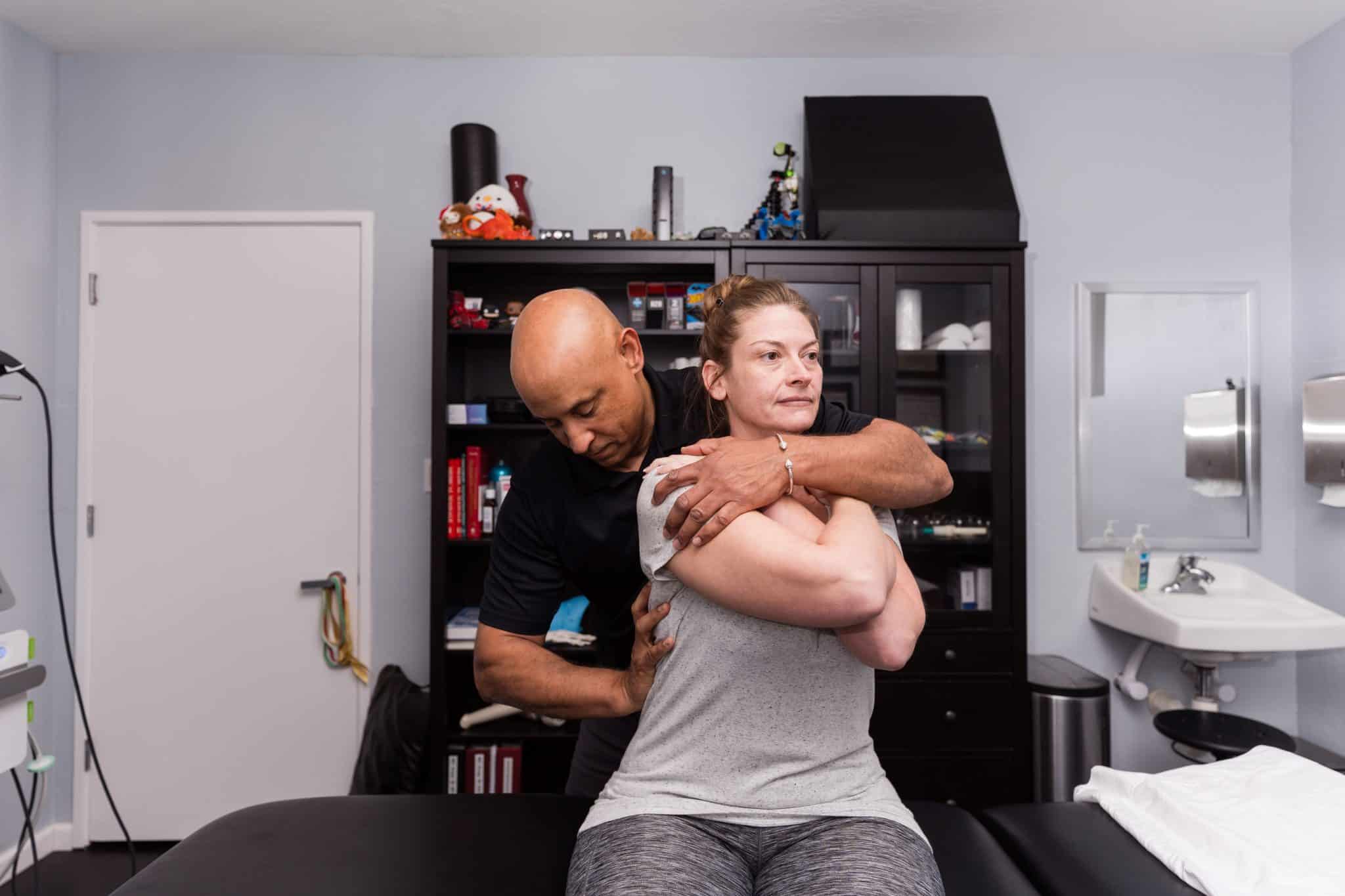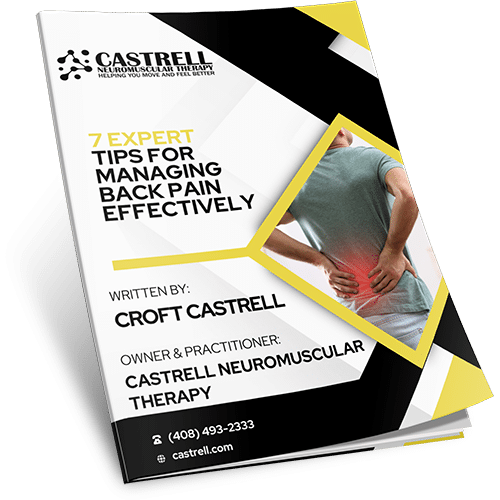Back Pain
At Castrell Neuromuscular Therapy, we understand that back pain isn’t just about discomfort – it’s about how it affects your ability to move, perform at work, and engage in your favorite activities.
What Is Back Pain?
Back pain is a common condition that affects many people at some point in their lives. It can stem from a variety of causes, including poor posture, muscle strain, overuse, or injury. One of the most common contributors to back pain is prolonged sitting, especially in work environments where individuals are at desks for extended periods. This can lead to a loss of range of motion in the hips and create imbalances that cause pain to refer into the lower back, neck, or head.
Back pain can be acute or chronic, and it often interferes with daily tasks and activities. In more severe cases, it can even impact one’s ability to participate in sports or enjoy leisure activities. Whether you’re experiencing discomfort from a long day at work, dealing with an old injury, or simply suffering from the effects of sitting too much, back pain can significantly affect your quality of life. By addressing both the symptoms and the underlying causes of back pain, we help you regain your mobility and get back to doing what you love.
What Are The Symptoms Of Back Pain?
Back pain can manifest in various ways, depending on the underlying cause. Common symptoms include sharp, aching, or throbbing pain in the lower back or upper back, and sometimes even radiating pain that extends into the legs. Many people experience discomfort after prolonged sitting or standing, while others may feel it after physical activities, such as lifting, bending, or running.
Some individuals notice that their back pain is more intense in the morning when they first wake up or after a long period of inactivity. For others, back pain can worsen during certain movements or after participating in sports, especially activities that require twisting or sudden movements.
In some cases, back pain can be accompanied by stiffness, reduced flexibility, or difficulty moving the spine. Numbness, tingling, or weakness in the legs or feet may also occur if the pain is related to nerve irritation. If you are experiencing back pain that interferes with your ability to perform daily activities, it’s important to seek a professional evaluation to determine the root cause and develop a treatment plan tailored to your needs.
What Is Our Approach To Fixing/Treating Back Pain?
At Castrell Neuromuscular Therapy, we take a comprehensive, hands-on approach to treating back pain. Our treatment begins with an in-depth evaluation to understand the nature of your pain, its causes, and how it’s affecting your daily life. This initial assessment is crucial, as it allows us to create a tailored treatment plan that addresses both the symptoms and the underlying causes of the pain.
Once we gather the necessary information, we use advanced tools, such as AI and 3D video technology, to gather objective data about how you move. This helps us visualize your movement patterns and pinpoint areas of dysfunction or weakness that may be contributing to your back pain. These technological insights allow us to track your progress and ensure that we are on the right path.
While some clients initially seek hands-on bodywork, we focus on understanding the root cause of the pain, which is often not localized to the area where you feel the discomfort. The pain you experience may be a result of postural imbalances, muscle weakness, or movement dysfunction elsewhere in your body. By addressing these underlying factors, we are often able to reduce pain even before we directly treat the area where it’s most felt.
Our approach is built on the idea that lasting relief comes from treating the whole body, not just the painful symptoms. We don’t rely on medications or injections. Instead, we use manual techniques and a data-driven approach to restore balance to your body and alleviate your pain. Clients who come to us for back pain treatment often report feeling better and more mobile, experiencing what feels like a “magic” transformation as they regain their ability to move comfortably.
At Castrell Neuromuscular Therapy, we are committed to helping you overcome back pain and return to the activities you love with a comprehensive and individualized treatment plan that works.
Download Free Report
Is back pain severely reducing the quality of your life? If you’re tired of relying on medication, avoiding spending time with your loved ones, or considering surgery because the discomfort is just too much, there’s a better way. Our free back pain report reveals natural, proven strategies to relieve pain, improve mobility and prevent it from returning – without relying on pills or endless treatments. Inside, you’ll find expert insights, practical tips, and actionable steps you can start using today.


